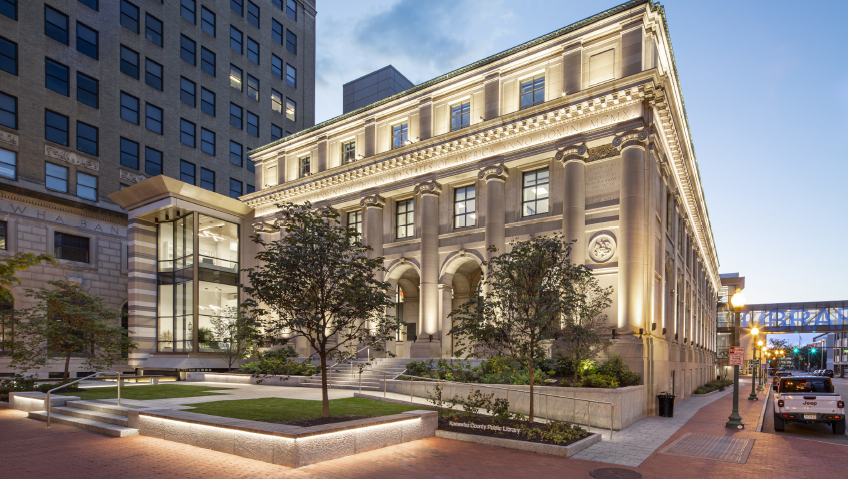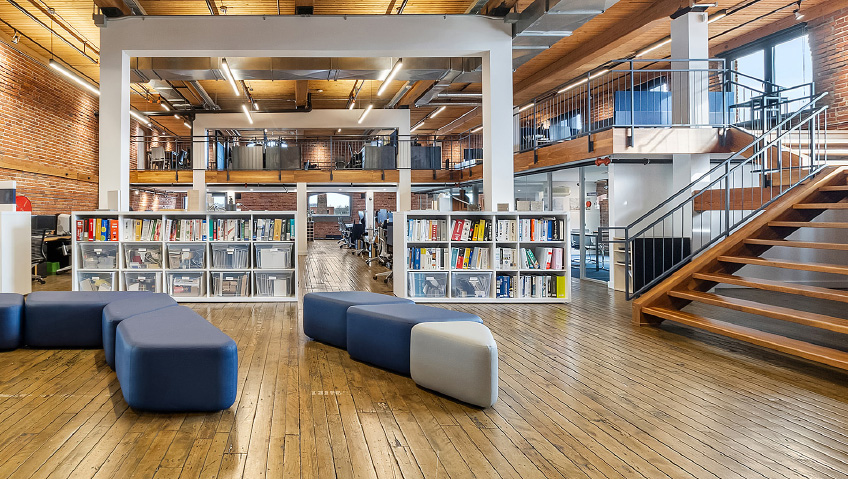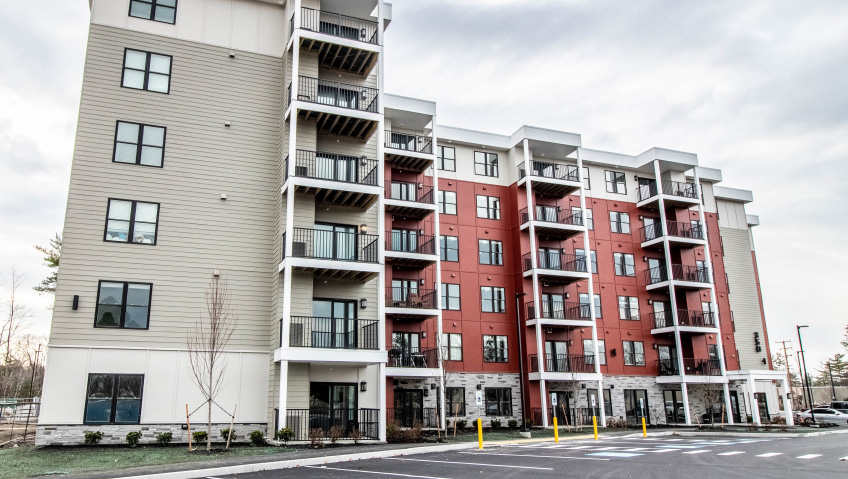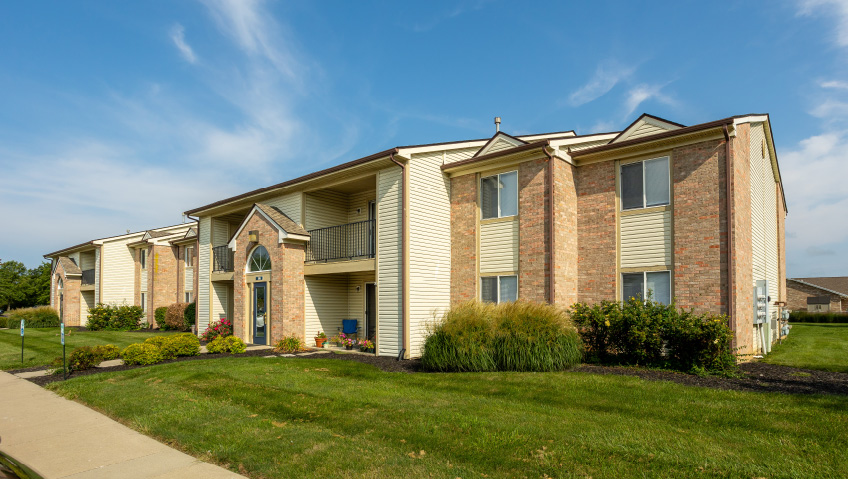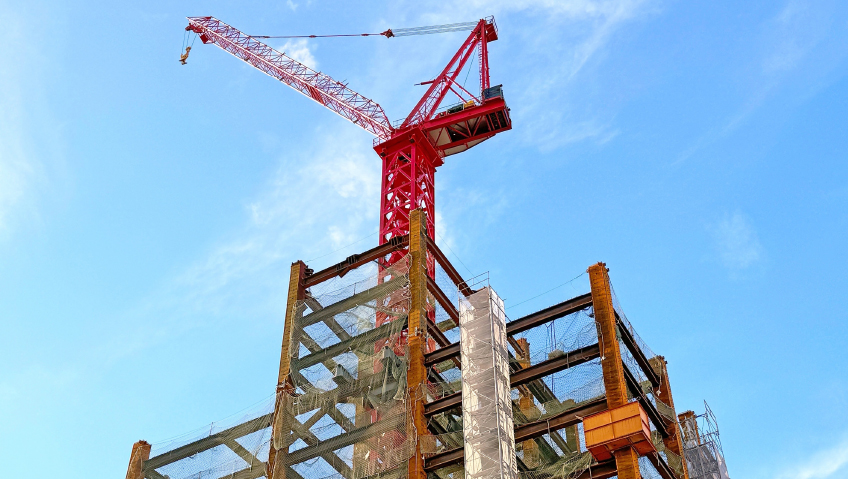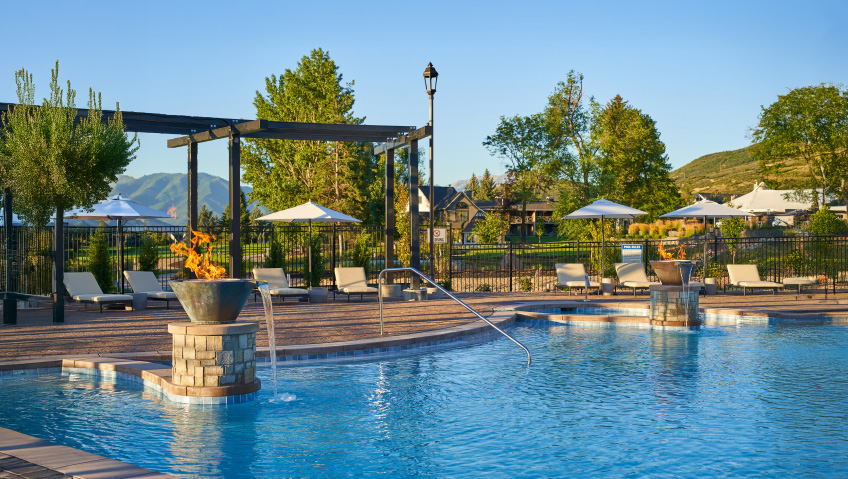Andropogon, a Philadelphia- and Raleigh-based landscape architecture and ecological design firm, gets its memorable name from the Latin word for a type of grass. “The significance of that is that it’s a pioneer species,” says Principal and Director of Practice Development Darren Damone. “It’s one of the first grasses to recolonize and restore environmentally degraded sites.”
The name is certainly fitting for a firm committed to designing with nature and redefining sustainability. When taking this stance, “The first consideration is to understand that natural systems, plants, and animals are not isolated entities, and that includes human beings as well,” says Principal José Almiñana. “We’re part of an entire biome, the inhabitants of planet earth.”
This awareness is evident in the careful approach the company takes while considering both the natural environment and its human occupants. “It’s really about weaving those landscapes of humans and nature together for the benefit of both,” Almiñana says.
Damone adds, “These environments are not static. They move in cycles over long periods of time. We talk a lot at Andropogon about this notion of place forward, about anticipating change in natural systems and natural processes—not only for the landscape today, but over time. More and more we find ourselves considering not only seasonal, cyclical change, but also the larger shifts as our environment begins to transform and we come to grips with the impacts of climate change. How we as designers can anticipate and accommodate that in our designs is ultimately most important.”
How does the team create truly sustainable sites that go beyond merely minimizing impact on the environment? “Fundamentally, we think about our work as being regenerative,” Almiñana says. “We need to go beyond the idea of just fixing things or doing no harm. We need to create a positive impact and allow sites to evolve and become more and more complex. A simpler site is more prone to decay and death so complexity is key for the maintenance of life on the planet,” he says.
“So, what you want to do is look for ways to leverage the productive potential of a site, to begin to heal and grow using native plants because they’re best adapted to any location. Our approach to our work is universal; we would use the same approach across the planet because we’d be responding to local circumstances. We start all our work from the perspective of the place that we occupy.”
This approach provides lasting benefit far into the future. “We’re asking for landscapes to actually provide ecosystem services,” Almiñana says. “We need to be constantly vigilant of that process. So we try to make sure that it is embedded in everything that we do, and the work doesn’t just end when the project ends; on the contrary, it continues as the site is occupied by the new users.”
The entire firm is likeminded in this approach. “As an office, as a whole, and as individuals, the work and people are driven by this mission to support ecosystems through regenerative design,” says Damone, “and I think that that commitment really transcends the walls of this office. The staff is coming here because of that sort of purpose and that sort of mission-driven approach to landscape design, and that’s something that really energizes us. It’s something that we all sort of carry with us wherever we are in the world, whether we’re actively working or not. It’s all very important to us.”
Andropogon has a long history and a rich portfolio of memorable projects that showcase its commitment to designing with nature. In Philadelphia, the firm developed an uninviting expanse of concrete into an engaging, pedestrian-friendly social space that is as welcoming as it is functional. “We were able to retrofit an old service yard for the transportation authority at a place in the city where we have the greatest density of trolley routes,” Almiñana says.
The team transformed the transportation hub into a gathering space with gardens and shaded sitting areas, creating an urban oasis for public transport users. Benefits include a reduction in the overall carbon footprint as well as “encouraging people to be more active in communal spaces,” Almiñana says. “So it’s a combination of a number of functions and outcomes that I think are all for the benefit and moving forward of the community.”
Located in Paterson, New Jersey, alongside a national park with a well-known scenic overlook, the Paterson Quarry Lawn and River Walk Park is another notable and complex urban project that Andropogon recently completed. “This is an interesting project because it occupies the intersection of a lot of different elements in terms of the project’s goals and objectives, most notably this notion of regenerating and connecting natural systems,” Damone says. “There’s also a cultural component to this project that taps into the rich history of the site, bringing tangible links to the past to the community of Paterson, New Jersey, a place that does not have a lot of urban open spaces. It makes us incredibly excited to think about what a tremendous asset this park will be, providing usable, high-quality, open space adjacent to the Passaic River and the Great Falls in the heart of Paterson. So that’s a really intriguing project for us because it sits at the confluence of ecological design, historic preservation, and existing, well-loved cultural resources within the community.”
Andropogon’s work for the Kanawha County Public Library in Charleston, West Virginia is another recent project that breathed new life into an important community asset. “This project is programmatically similar to the Quarry Lawn project in Paterson, in that it contributed to the revitalization of a major public, civic landmark, and a place of learning,” says Damone.
“It was really about creating surroundings that are more inviting, highlighting the value of the library, not only for the city, but also as a regional destination within an area of Charleston that historically has been overlooked. The essential element for us was that this project included not only a renovation to the library itself, but also a redesign of the entire site, which integrated this public institution in the community.”
In West Philadelphia, Andropogon recently completed a unique series of projects within University City, a major mixing point between Drexel University, the University of Pennsylvania, and the rest of the University City community. The project involves the creation of a new urban core and the transformation of a former throughway into a destination in its own right, bringing disparate members of the community together in one richly interactive space.
“We contributed to the creation of a public square where there wasn’t anything before,” Principal Elizabeth Hamill says. “It was a vacant, former high school, and now all of these beautiful buildings went up along with a state-of-the-art school and a new town green with dozens and dozens of new canopy trees, a new playground with porous pavement, and fun boulders for kids to climb on within a safe, fenced playground area. We also designed a public right of way that lets people use a dynamic, natively-landscaped corridor to drop their kids off, get a cup of coffee, and go to work in the adjacent buildings all within a verdant, pedestrian-friendly environment. So it’s this unique situation where you’ve got people from the neighborhood sharing the same spaces with some of the best minds at Drexel and Penn that made it all very satisfying to pull together.”
The team members are eager to perpetuate their approach to landscape architecture for the benefit of communities as well as the natural environment. “As sustainability becomes more widely integrated and central to the practice of landscape architecture and the AEC industry, we’re excited to keep pushing the performance of our spaces,” says Damone.
Indeed, the company has a long history of pushing the industry forward. “We started as a bit of a maverick, doing things a little bit different,” says Almiñana. “Back in the 1970s, we were looking at the landscape architecture profession and the need for expanding this role in the design industry and the way that the environments are modified, and now some of the things that we started to do very early on are common practice.” After 40 years at the forefront of landscape architecture, Andropogon is well prepared to continue leading the way far into the future.

